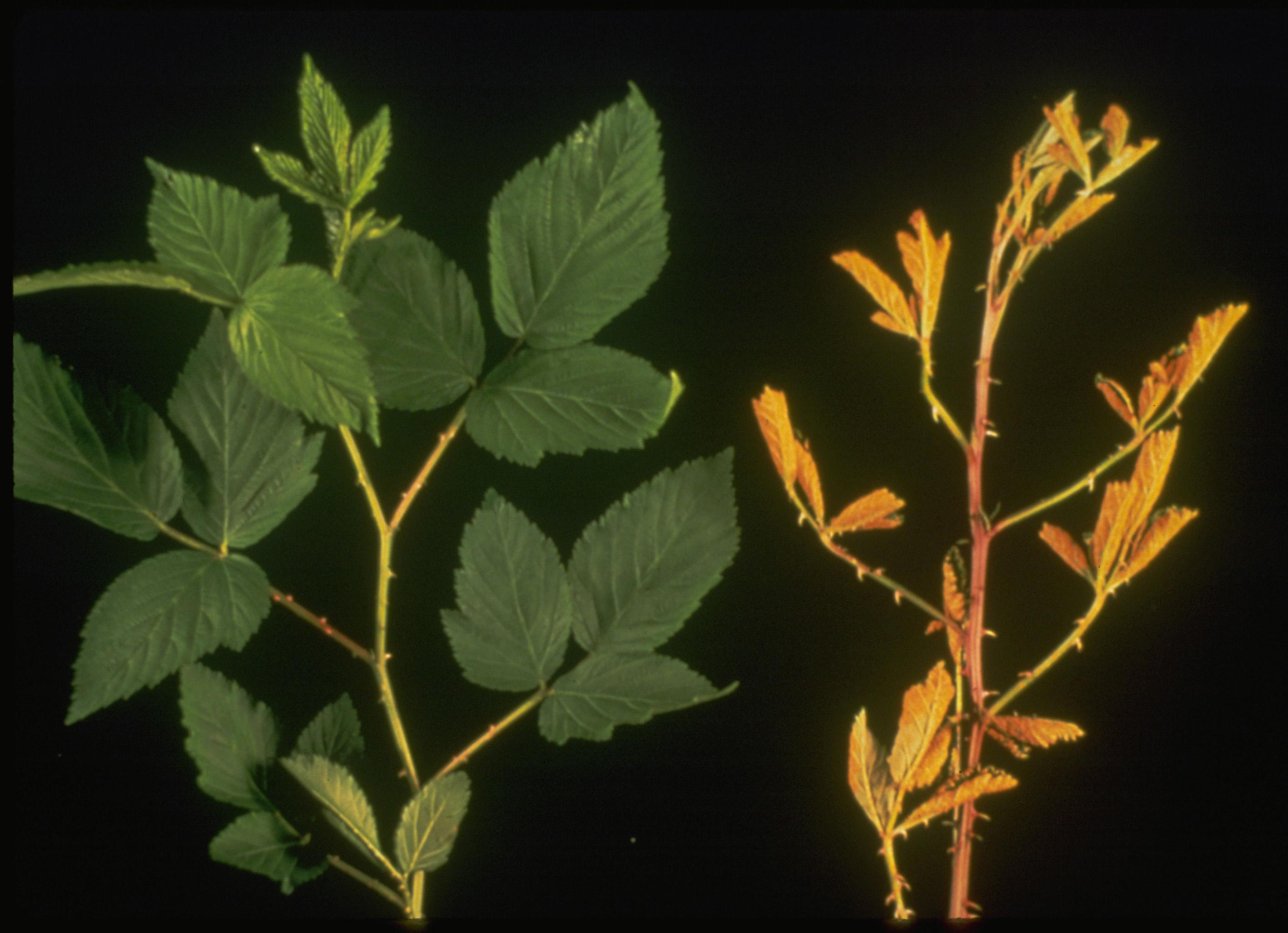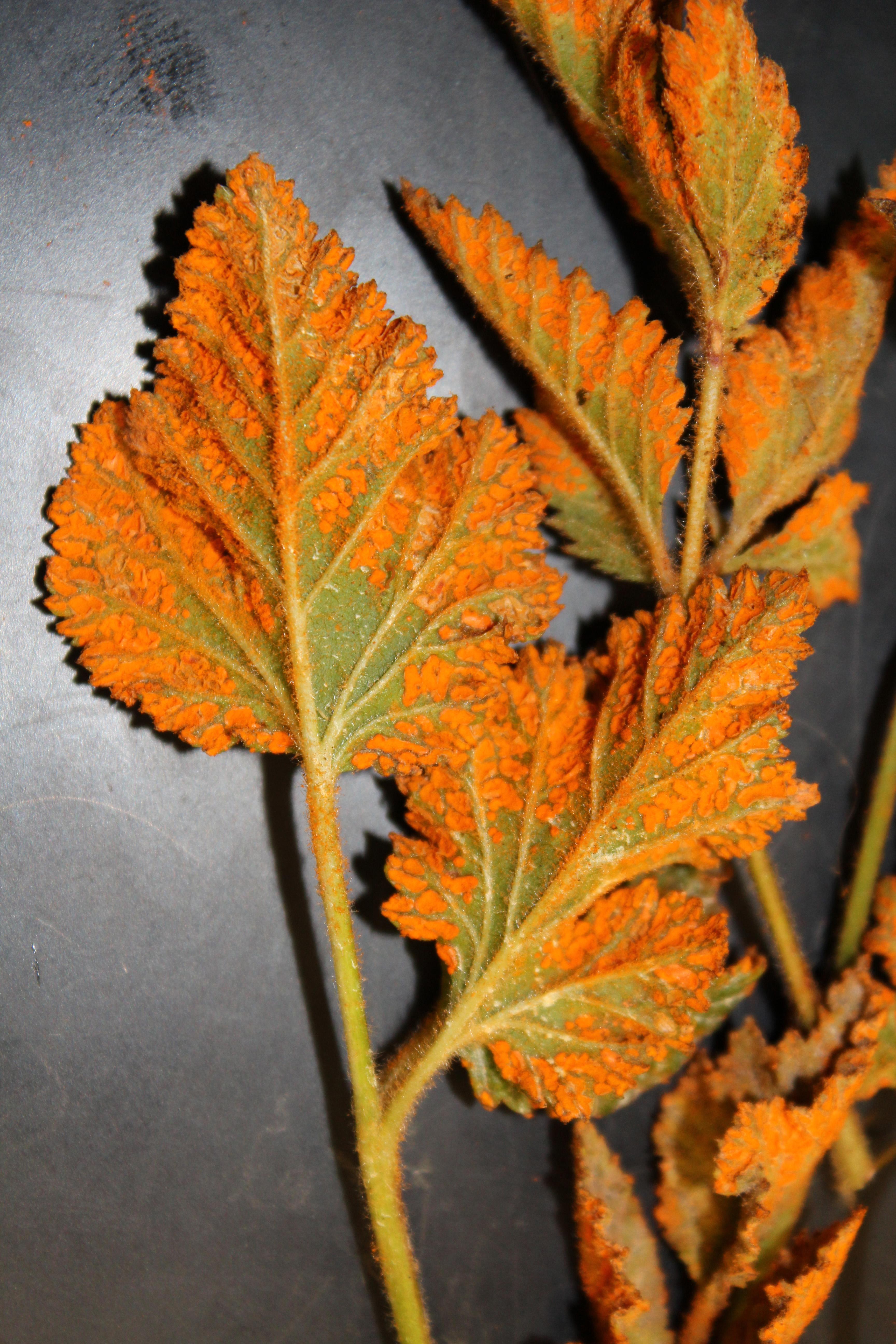Orange Rust of Brambles
Return to Diseases
Orange rust (Gymnoconia nitens) resembles other rust fungi, infecting leaves, buds, and shoots of blackberry and black raspberry. Red raspberry is not susceptible. Orange rust is systemic; infection spreads internally to all plant parts. Once a plant is infected, it remains infected for life. Plants become stunted, misshapen, and weakened; little to no fruit is produced. Symptoms become apparent as new growth emerges in spring. By late April and through May, blister-like rust pustules are visible on lower leaf surfaces. Pustules are waxy and erupt with orange, rusty, powdery spores. By June, leaves wither and drop. Rust spores infect leaves, buds, and shoots. Overwintering occurs as systemic infections in crowns and bases of shoots.

Orange rust (right) infected shoot compared to healthy (left).
(Photo: John Hartman, University of Kentucky)

Orange rust pustules on the undersides of blackberry leaves.
(Photo: Nicole Gauthier, University of Kentucky)
Management:
- Begin with disease-free stock.
- Avoid proximity to wild bramble populations or old plantings.
- Consider planting immune species or tolerant cultivars.
- Increase air circulation to encourage drying of plant tissues (pruning, thinning, spacing, and managing weeds).
- Rogue (completely remove) and destroy symptomatic plants, including roots.
- Apply fungicides as protectants.
